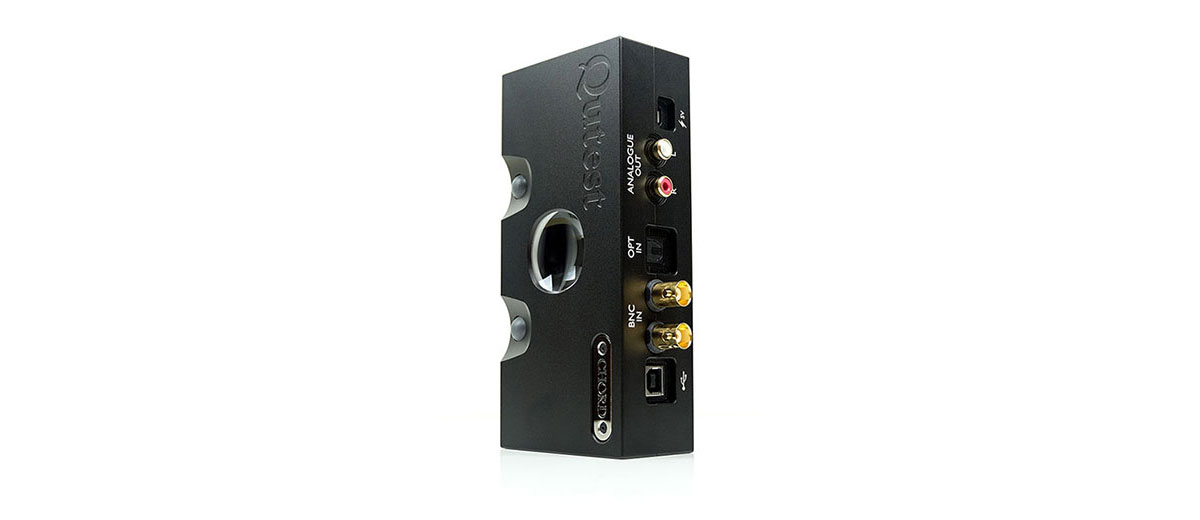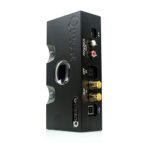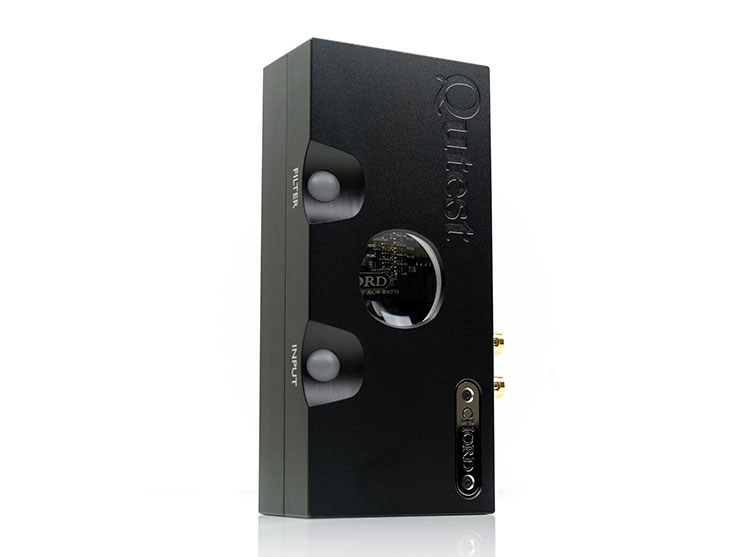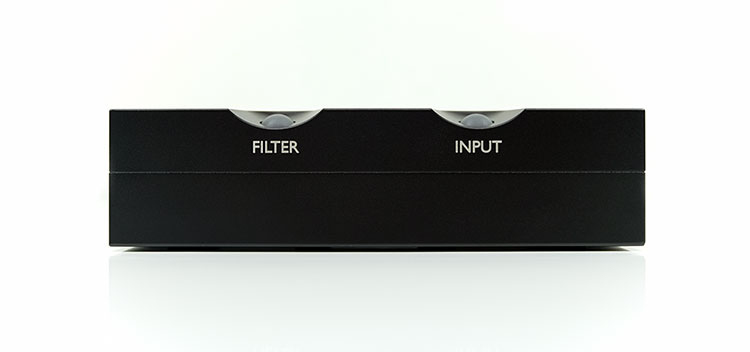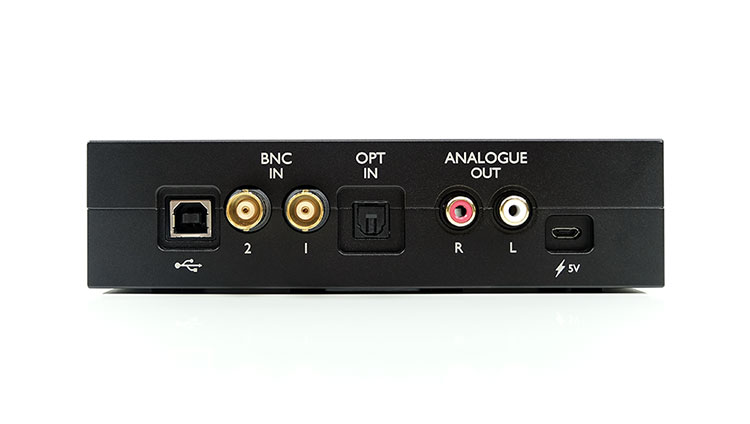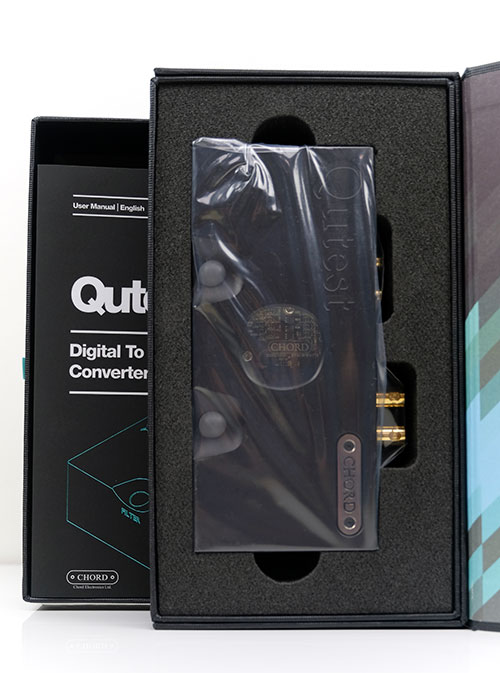This review covers the Chord Electronics Qutest compact desktop DAC that is designed to partner with the Annie amplifier and the Huei phono stage. It is priced at £1195.
Disclaimer: The Chord Electronics Qutest sent to us is a sample in exchange for our honest opinion. We thank the team at Chord Electronics for giving us this opportunity.
You can read more about Chord Electronics products we reviewed on Headfonics by clicking here.
The Chord proposition has been a compelling pitch since the Hugo crash-landed into the portable audio scene a few years ago. Not many people I know have not tried and voiced an opinion on the Mojo or the Hugo variants.
Not as many headphone audiophiles know about Chord’s less storied but just as meritorious achievements in the world of HiFi going back to the ’80s. This is partly due to the portable bubble a lot of us operate in and also due to the summit-fi pricing that places a lot of these products beyond the average Joe’s budget such as the $10,588 Dave.
The Qute EX and 2Qute DAC were perhaps Chord’s most accessible desktop products priced at just under £1000 and launched in 2014/2015. Based on the Hugo architecture the 2Qute was given a critical thumbs up. Now, in 2018, Chord comes back with its latest iteration, the Qutest DAC, and again, the price is more accessible at £1195.
This time the Qutest pulls a lot from the Hugo 2 technology which grabbed the top portable DAC award from us last year. That has to be a good sign.
Company Pitch
Take everything you know and love about one more expensive product, strip away the portability and amping components, and leave yourself with just the core DAC and a cheaper price. Ok, so that’s probably an oversimplification but nevertheless, that is the basic pitch Chord is going for with the Qutest.
The one you know and may already love is the portable kingpin Hugo 2 which makes sense given the 2Qute was based on the Hugo 1. The Qutest does away with the Hugo 2’s portable features such as headphone amplification, Bluetooth, battery, and volume controls but retains that impressive DAC.
Chord also adds some additional unique features to the Qutest such as voltage control which dedicated DAC users would be very sensitive to. This is what Chord calls a “pure” DAC pitched entirely for the home or desktop environment.
Technology Inside
FPGA Digital Audio Conversion
The Qutest DAC draws on the Hugo 2’s next-generation FPGA Xilinx Artix 7 chipset rather than off-the-shelf DAC chips. Going from the 2Qute to the Qutest DAC is the same type of upgrade on the previous 45nm Spartan 6 inside the last-gen 2Qute DAC.
The concept behind FPGA-based engineering design for audio devices was detailed in the Mojo review. Essentially, Chord has a much higher degree of control in its engineering process than many of its competitors due to the use of in-house FPGA programming.
As I am reminded from going over the Mojo review of John Franks (CEO) own words over a chance dinner in late 2015 in Manila:
“The difference between us and a lot of other audio product manufacturers out there is that they are what we call “users” of DAC chips and we design our own DAC process from the ground up”
The key difference between traditional DAC designs, and the ‘Chord way’, is that the DAC implementation and the pulse array programming around it are wholly developed by Chord and not “bought” from another supplier.
Better Digital Filtering
The switch to the Xilinx Artix 7 chipset is important in the context of how Chord measures the improved technical excellence in the Qutest compared to the 2Cute and the Hugo 1. The XC7A15T processor is 30% faster than the older Spartan 6 and purports to be twice as efficient.
The Watts Transient Aligned filters (WTA) tap-length capability has now increased from 26,368 to 49,152 using a 10-element Pulse Array design. The longer the filter (more taps), the more finely the conversion response can be tuned.
Considering that the average off-the-shelf tap length is around a couple of hundred and designed by “someone else” then you can understand the level of nuanced control Chord has over their ability to improve on their own products in the direction they want to go in.
Improved Usability
Much like the Hugo 2, the Qutest receives a similar smattering of enhanced usability to its features. Some of this is down to their existing customer feedback such as clearer button labeling or the use of their orb color scheme buttons for input and filter selection. Some of it is new technology such as the filters themselves that were not in the 2Cute.
On paper at least the Qutest should be much easier to use and more familiar to the typical digital audiophile or Chord customer who has been using the Hugo 2.
Design
Form Factor
The Qutest is much smaller than I was expecting. I guess the name is a bit of a giveaway but it didn’t prepare me for how “cute” it really is. Measuring in at 41mm (H) x 160mm (W) x 72mm (D) and 770g the Qutest weighs slightly less than two Sony 1Z Walkman’s and about the length of an average guy’s hand.
The emphasis is on being discreet with its all-matte black finish save for the translucent orb controls at the front, the Chord chrome and Qutest motif, and the glass bubble in the middle of the front plate. There is something almost voyeuristic about that bubble.
Peering into it you can make out the “Rob Watts” insignia and part of the PCB, almost like staring into the R&D floor of Chord itself.
Of course, it does much more than simple corporate titillation. The window also allows the Qutest built-in LED arrays to broadcast a viewable colored glow that denotes the audio sample rate it is decoding from the red of 44.1k to the white lights of DSD, much like the Hugo 2.
If the lights are too bright or watching at night you can elect to dim the LED via pressing the two buttons on the top panel at the same time for a lower beam level.
Materials
A Single Billet
The Qutest is precision machined out of a single aluminum billet and it feels incredibly solid. There is no lightweight paneling job on top of a layer of PCBs and chips. This is rock solid drive a tank over it and still turn it on and use it kind of durable.
Screws are all to the base and very deep-set to the point of invisible. The level of protection the components inside have from external vibration must be extremely high indeed.
Chord has finished the design off with plenty of shock-absorbent grippy feet on the base. These are absolute musts for placing the Qutest on a glass HiFi rack because without them I am pretty sure it would damage the glass.
Contouring
The contouring on the chassis is deliberate but variable. Around the orbs the aluminum scooping is beautiful. The cornering is a touch sharper but not overly so. The rear input and output sockets are accurate and well-spaced out. All sockets are gold plated and create a nice level of contrast between them and the black body finish.
Labeling
The functionality labels are all big, white, and very easy to see. Despite coming with a reasonably complex manual Chord seem to have gone to great lengths to make sure every button and socket on the physical exterior of the Qutest is almost blindingly obvious in terms of what it does.
Functionality
The control system on the Qutest may look simplistic to the uninitiated but to long-time Chord devotees, those 2 buttons on the top do quite a lot.
Filters
On a high level, the Filter options control 4 different sound-shaping filters. You will know which filter you are using when cycling through them by the color of the orb button. They work on a cycling basis so simply tap through until you find the filter you wish to use. They are as follows –
- Incisive Neutral (White color)
- Incisive Neutral HF Roll-off (HF meaning high frequency) (Green)
- Warm (Orange)
- Warm HF Roll-off (Red)
For most, the incisive neutral filter will be the filter of choice given that it is the only filer that produces the most linear and detailed response out of the four. The Incisive Neutral setting will come close. It has the same level of resolution only with the high-frequency reproduction rolled off slightly to avoid any distortion present in the very upper limits of the FR.
Both Warm and Warm HF roll-off filters are designed to logically sound a little warmer than the two neutral filters with the latter showing a little less headroom and treble presence. Again, this is a preference thing between the two as both have similar resolution levels just a bit lower than the Neutral Settings.
Inputs
You have four different types of inputs via the Qutest using the input orb button. Like the filter options, they are cyclical and you simply tap through them to get your desired input source connection. The connections and their corresponding colors are as follows –
- USB – White
- Coaxial 1 – Yellow
- Coaxial 2 – Red
- Optical – Green
Note that both coaxial 1 and 2 physical inputs on the rear panel are BNC terminated. BNC coaxial cables use the bayonet connection principle rather than the standard coaxial RCA-type jacks. BNC is one of the staple connection systems used on other Chord products so advanced systems like the new M-Scaler will work seamlessly with Qutest.
The use of BNC is more to do with their pro-audio legacy and the fact BNC (especially dual BNC) can deliver higher sample rates than regular coaxial. Personally, I know where my preference is in terms of standard coaxial cables though the cost of a few BNC terminated ones is not that much.
Power
There are two aspects of power worth speaking about when looking at the Qutest functionality. The first is the DC regulated 5V power supply which is an interesting choice. The second is the fixed voltage output selector for matching with desktop amps analog inputs.
Voltage Selection
The second function also reveals another feature of the orb buttons, one that is not so intuitive until you read the manual. By pressing both input and filter together at the same time when powering on the Qutest you can select a fixed voltage setting of either 1V (red), 2V (green), or 3V (blue) when hooking up the RCA analog outputs.
Personally, I would stick with 2v for most desktop amps which are the most commonly selected voltage setting when hooking up a DAC. 1V I rarely see except on budget line-outs from some DAPs and they tend to sound a little weak when amplified.
External Power
The selection of a 5V DC external power supply could be seen as a bit of a legacy from the Hugo 2. Certainly, the use of a micro USB socket would suggest as much except no battery of course. Instead, Chord supplies you with a 5V 2A switching power DC plug which you insert into your mains, AVR, or whatever you use.
Eagle-eyed readers will also spot that a 5V micro-USB will also run quite happily from an external battery source such as a power bank or something more specialized like the Kingrex uPower. This offers two things.
The first is a dedicated and clean supply of power without the possibility of unwanted noise from any shared electrical mains circuit. The second is a smidgen of mobility should you be mad enough to consider the Qutest to be a mobile or even transportable device.
Functionality
DAC Capability
Since the Qutest deploys the Hugo 2 DAC you get the same outstanding decoding capability. That includes PCM up to 32BIT/768kHz and DSD512 via USB and 32BIT/768kHz via dual BNC, (using both BNC inputs at the same time, for example, an M-Scaler connection).
Using one BNC coaxial connection will drop it down to 32BIT/384kHz decoding and optical will max out at 24BIT/192kHz.
Those decoding rates are bulletproof though I dare say the MQA lovers will be upset that it is not possible to natively decode MQA via the Qutest. Chord is not a believer in the MQA vision and I have had a long discussion with them on that earlier this year in Singapore. You are not likely to see MQA on a Chord product for the foreseeable future.
The Numbers
Naturally, the numbers are the same as the Hugo 2and that is very much a good thing with a THD of less than 0.0001% at the highest 3V output setting and a +N of 117dB at the same level. Compare that to Oppo’s Sonica DAC at 115dB (same A-weighting) and NuPrime’s DAC-10’s 115dB and a THD+N at 0.0003% then you realize just how clean that Qutest DAC signal really is.
Accessories & Packaging
The Qutest comes in a fairly recognizable Chord-type packaging which means professional but slightly understated. Inside the black well-labeled outer box you have a split shelf foam-cushioned tray system with the Qutest on the top shelf and the accessories and Manual on the bottom shelf.
Perhaps it was a cost issue but this is the first Chord product that does not come stuffed with a ton of connector cables such as you would find in the Hugo 1 and 2.
More like the Mojo with the charger and USB cable only, except the cable is a standard 1m compared to the short version inside the Mojo box. I would have loved to have seen either an optical or a BNC cable stuffed in there just to get up and running in case someone is not using it specifically with a computer.
You also get a little cloth carry bag for the Qutest. Ummm, so yeah. Perhaps a hint to the possibility of it being transportable? Maybe. I doubt it offers any sort of protection for the Qutest from dropping or the elements. Perhaps a surprise for Granny on her birthday in the branded nice cloth bag, some mint humbug, or something? Lovely.
Click on Page 2 below for Sound Impressions & Comparisons

